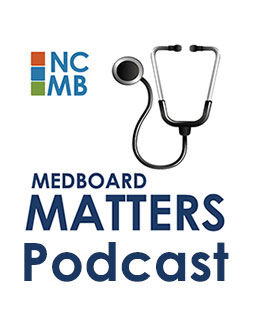Licensee feedback helps shape new position statement
Categories: Position Statements Comments: 2 comments Print Friendly Version | Share this item
Licensees may wonder if their input can make a difference when the Board seeks feedback while developing new policies. The Board’s recent work to establish a position statement regarding the use of video and still photography in the examination room clearly shows that it can. NCMB adopted a position statement on this topic in July, after considering feedback received from licensees and stakeholders. Constructive criticisms of the draft language NCMB published in the Forum helped the Board avoid adopting a policy that would likely have been unduly burdensome and may have been incompatible with current clinical practices.
NCMB’s Policy for the use of audio or visual recordings in patient care originated from the Board’s review of an enforcement case that involved a medical practice’s use of video cameras for security, both in patient examination rooms and in public spaces such as the waiting and parking areas. A patient complained to the Board about this practice, stating specific concerns that no private area had been provided for undressing and dressing. The Board’s primary goals in drafting the position statement were to ensure that 1. Patients have a private area in which to disrobe or redress and 2. Files are stored in a secure manner that is compliant with HIPAA privacy rules.
The Board’s Policy Committee developed a draft position statement in Spring 2017 that included guidance on obtaining informed consent from patients before capturing still or video images. The text of the draft position was published in the Spring 2017 issue of the Forum, with an invitation to readers to submit feedback on the proposed text to the Board. NCMB received several comments from licensees and professional organizations representing specialists who regularly use photography for clinical purposes. Their comments noted that it would be impractical or even impossible for licensees to obtain informed consent in a manner that would satisfy the requirements stated in the draft position. For example, still or video images are captured before, during and after certain surgical procedures, and in emergency situations, when the patient may not be conscious or otherwise capable of giving consent. Additional feedback pointed out that consent to photo or video photography is already part of the general consent forms used by surgeons and others who regularly use it for clinical purposes, thus making the informed consent protocols outlined in the draft statement redundant. This feedback influenced the Board’s decision to strike detailed recommendations regarding informed consent from the final version of the position statement.
Thank you to all licensees and stakeholders who took the time to provide feedback!
NCMB’s Policy for the use of audio or visual recordings in patient care originated from the Board’s review of an enforcement case that involved a medical practice’s use of video cameras for security, both in patient examination rooms and in public spaces such as the waiting and parking areas. A patient complained to the Board about this practice, stating specific concerns that no private area had been provided for undressing and dressing. The Board’s primary goals in drafting the position statement were to ensure that 1. Patients have a private area in which to disrobe or redress and 2. Files are stored in a secure manner that is compliant with HIPAA privacy rules.
The Board’s Policy Committee developed a draft position statement in Spring 2017 that included guidance on obtaining informed consent from patients before capturing still or video images. The text of the draft position was published in the Spring 2017 issue of the Forum, with an invitation to readers to submit feedback on the proposed text to the Board. NCMB received several comments from licensees and professional organizations representing specialists who regularly use photography for clinical purposes. Their comments noted that it would be impractical or even impossible for licensees to obtain informed consent in a manner that would satisfy the requirements stated in the draft position. For example, still or video images are captured before, during and after certain surgical procedures, and in emergency situations, when the patient may not be conscious or otherwise capable of giving consent. Additional feedback pointed out that consent to photo or video photography is already part of the general consent forms used by surgeons and others who regularly use it for clinical purposes, thus making the informed consent protocols outlined in the draft statement redundant. This feedback influenced the Board’s decision to strike detailed recommendations regarding informed consent from the final version of the position statement.
Thank you to all licensees and stakeholders who took the time to provide feedback!
Comments on this article:
I’m glad the Board is FIRST obtaining feedback from “the real world” of practicing clinicians BEFORE issuing it’s statements or policies.
By S. John Guha, MD on Nov 29, 2017 at 5:53am
Further, this post began to educate me about a topic I had not previously considered.
Dr. Guha, thank you for your nice comments. I’m glad you found the article informative. It has long been NCMB’s practice to seek feedback before adopting a position statement or rule. We haven’t always had wide participation, but we have worked hard in recent years to broadly communicate when there are opportunities to participate.
By Jean Fisher Brinkley on Nov 29, 2017 at 11:50am
